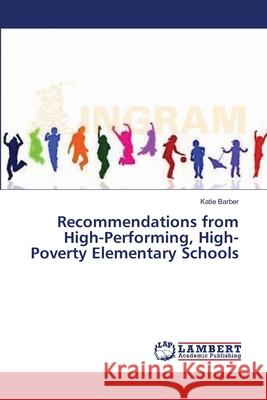Recommendations from High-Performing, High-Poverty Elementary Schools » książka
Recommendations from High-Performing, High-Poverty Elementary Schools
ISBN-13: 9783659566486 / Angielski / Miękka / 2014 / 104 str.
Current research illustrates that some schools, often referred to as high-performing, high-poverty schools, have led their low-income populations to high levels of achievement (Ambrose, 2008). Hypothesizing that some schools were doing quite well with students from low-income families, the director for the Center for Urban Studies at Harvard University, Ronald Edmonds and other researchers looked at achievement data from schools in major cities around the country where student populations were from high-poverty areas. During the 1980s a list was developed that identified common characteristics that were present in effective schools. These traits became known as the Correlates of Effective Schools. These correlates appeared repeatedly in high-performing schools, despite the schools socioeconomic levels (Lezotte, 1991). Research regarding high-poverty, high-performing elementary schools specifically located in South Carolina is limited. The purpose of this research was to learn how principals of high-poverty, high-performing elementary schools in South Carolina promote high levels of student achievement.











